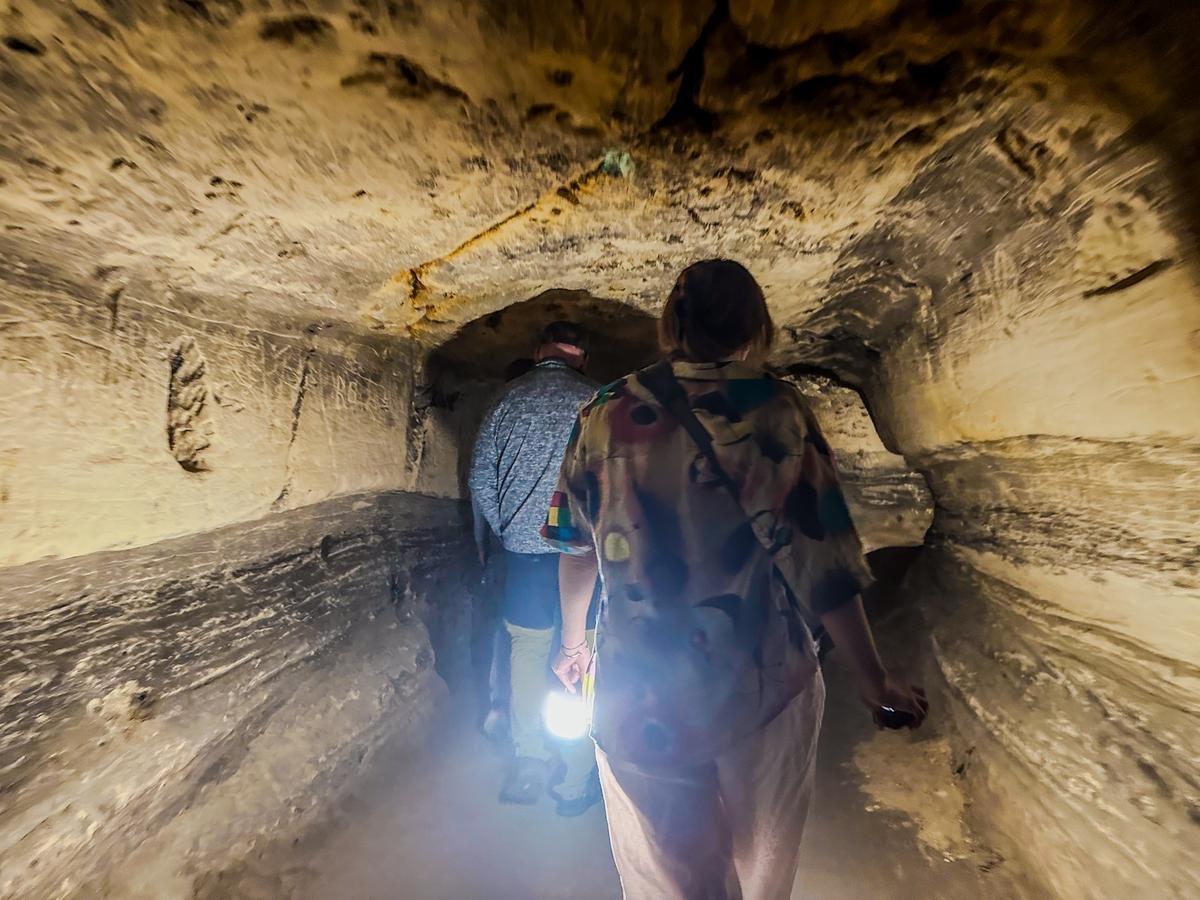The Secret Life of the Maastricht Caves: History and Mystery Await
2 min read
Place Details
Name: Maastricht Caves
City: Maastricht
Country: Netherlands
Address: Luikerweg 80a, 6212 NH Maastricht, Netherlands
Website: Visit the Website
Hours of Operation: Monday – Friday: 12–2:15 PM Saturday – Sunday: 11:30 AM–4:15 PM
About Maastricht Caves
Spanning a total area of approximately 230 kilometers, the Maastricht Caves form an underground network akin to the distance between here and Amsterdam. The pathways are unstructured, featuring a legacy of the farmers who, over 700 years, excavated limestone blocks during the winter months when agricultural work was scarce. Their eagerness to maximize extraction often compromised safety, leading to collapses and the unstructured appearance of these tunnels.
In contrast, the other side exhibits more orderly, straight tunnels, managed by the monastery above, which employed experienced miners to ensure safety and efficiency.
The narrative takes a significant turn in 1926, when the Dutch cement industry commenced operations here, extracting limestone for cement and concrete production. This continued until 2018, leaving behind a transformed landscape with a vast quarry and a deep blue lake, now accessible to visitors.
During the Second World War, these caves served as crucial escape routes and smuggling paths. Soldiers and locals traversed the tunnels to evade Nazi forces and to access cheaper goods in Belgium, taking advantage of the price differences and lesser customs duties compared to the Netherlands.
The story also touches on the fort above the caves, which resisted collapse despite attempts to undermine it using gunpowder, illustrating the caves’ resilience and strategic importance.
Tourism’s rise in the early 20th century led to the embellishment of the caves with artworks to attract visitors, including drawings like the one depicting Maastricht’s center with its distinctive red-colored St. Servatius Church tower. This red hue, originally attributed to the use of ox blood for protection against the elements, also served to elevate the prestige and value of the structures it adorned.
The narrative concludes with a glimpse into the French Revolution era when local farmers sought refuge in the caves from advancing French troops. The caves’ blackened walls and ceilings bear witness to the covert activities that took place, with the absence of visible smoke chimneys to avoid detection.
The caves undergo annual inspections for safety, with authorities using long sticks to probe the ceilings, a practice that has led to some areas being marked by collapsed sections, highlighting the ongoing interaction between human endeavor and the subterranean world of the Maastricht Caves.
Different Cave Entry Points
| No. | Name | Location | Type of Cave | Date Discovered | Open to Public |
|---|---|---|---|---|---|
| 1 | Zonneberg Caves | Maastricht, Netherlands | Underground quarry | Unknown | Yes |
| 2 | North Caves | Maastricht, Netherlands | Man-Made | 17th century | Yes |
| 3 | South Caves | Maastricht, Netherlands | Man-Made | 18th century | Yes |
| 4 | Kazematten | Maastricht, Netherlands | Military fortification | 1575 | Yes |



